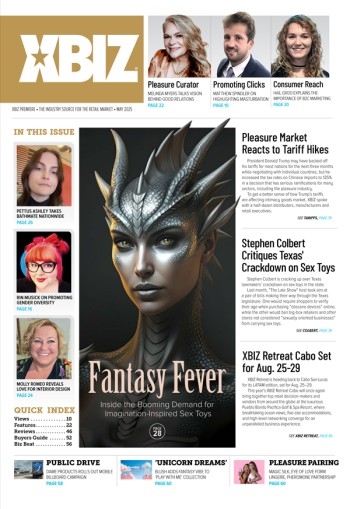Right now, there are more PR and marketing channels than ever before. Some are closed to the adult industry, but there are still more than enough channels available to help you turn your audience into customers. In fact, while more channels can mean more opportunity, it also means more difficulty coordinating messaging. That’s where integrated marketing comes in.
In theoretical terms, integrated marketing is a strategy in which positive messaging is coordinated and consistent across a number of different channels, targeting specifically defined audiences. In practice, it means that your paid, earned and owned media channels are all saying the same things at the same time.
Having a consistent message across all available channels, over and over again, is how you eventually establish yourself in the mind of your audience.
What Non-Integrated Marketing Looks Like
Let’s say your brand has a marketing calendar, and the next major date is Black Friday — the biggest shopping day of the year, and a natural time to launch a major promotion to drive up conversion rates. A senior exec tells the marketing team, digital team, PR team, social team, sales team and customer service team, “We’re offering 69% off selected products for a week. Go away and come back with plans to amplify it.”
The marketing team proposes an aggressive display ad campaign on YouTube with a tagline like “Try 69 for Black Friday.” Meanwhile, social proposes mainstream influencer partnerships to promote the discount code with the slogan “Get the Most From Black Friday.” PR pitches a pop-up store in New York to gather email sign-ups with a headline like “The Sexiest Black Friday Ever” and so on.
Each of these channels is fulfilling its brief — but there’s no coordination. No consideration of how the customer will interact with each of these touch points, or how they’re supposed to feel when they do. In slightly more poetic terms, there’s no sense of “journey.” Instead you have multiple strategies, each specific to its respective channel.
Even in a large business with a healthy PR and brand marketing budget, in which those channels are managed in-house, it’s often very difficult to coordinate teams and stakeholders to sing with a single voice. When teams work in silos, each has its own goals, KPIs and projections, and each is focused narrowly on its own channels, with eyes only on its own audience.
The Benefits of an Integrated Strategy
Your comms can be award-winningly good, but no one’s going to remember them if they only experience them once. Having a consistent message across all available channels, over and over again, is how you eventually establish yourself in the mind of your audience. By coordinating your messages and promotions across channels, you reap increased brand awareness and favorability, market share, purchase intent, memory recall, conversions, loyalty, return business and more. That’s why an integrated strategy should be the starting point for any and all comms work your business is doing. That strategy informs everything, so it needs to be pinned down before a single line of copy or a piece of creative is generated.
How to Build an Integrated Strategy
Integrated strategies can be very involved, requiring a strategy just to figure the strategy. Here are some steps to follow in the early stages of developing yours.
1. Establishing Clear Goals
Your KPIs and goals will shape your campaign. They will help you decide where your budget goes, and what the most fertile channels are for your purposes.
2. Identifying Your Audience
If your target audience is Gen Z, you’re more likely to find them on TikTok. If they’re retirees, you stand a better chance on Facebook or in print. This step helps you filter through the right places to share your message.
3. Channel Selection
Only now are you in a position to look at the most viable channels for your messaging. Identify which ones will work best, and define specific KPIs for each.
4. Creative
Develop your messaging and your visuals. Decide on which calls to action go where, and map out the various customer journeys.
5. Timelines and Milestones
Once all that’s in place, you need all stakeholders, partners and colleagues to be working from the same marketing plan. Everyone needs to be clear on dates, and if anything changes, everyone needs to know. If one thing breaks down, it all breaks down.
6. Launch & Maintenance
Integrated marketing doesn’t stop when the campaign goes live. You need to be monitoring and amending, investing more — or less — as necessary, and coming up with supporting secondary waves of messaging.
It’s Not Repetition, It’s Reinforcement
A successful integrated strategy relies on what may seem like repetitive messaging, but don’t worry: most consumers will not interact with every channel carrying your messaging. So don’t be afraid of being a little repetitive. Reinforcing your message does not mean you are beating it to death.
As with so many aspects of doing business, creating and deploying an integrated marketing strategy is all about organization, coordination and good communication. Staying focused on your end will help you grab and hold your audience’s attention, making it that much easier to convert them into customers, sooner or later.
Kathryn Byberg is the founder and CEO of Little Leaf Agency, a PR and communications agency dedicated to sexual wellness.








